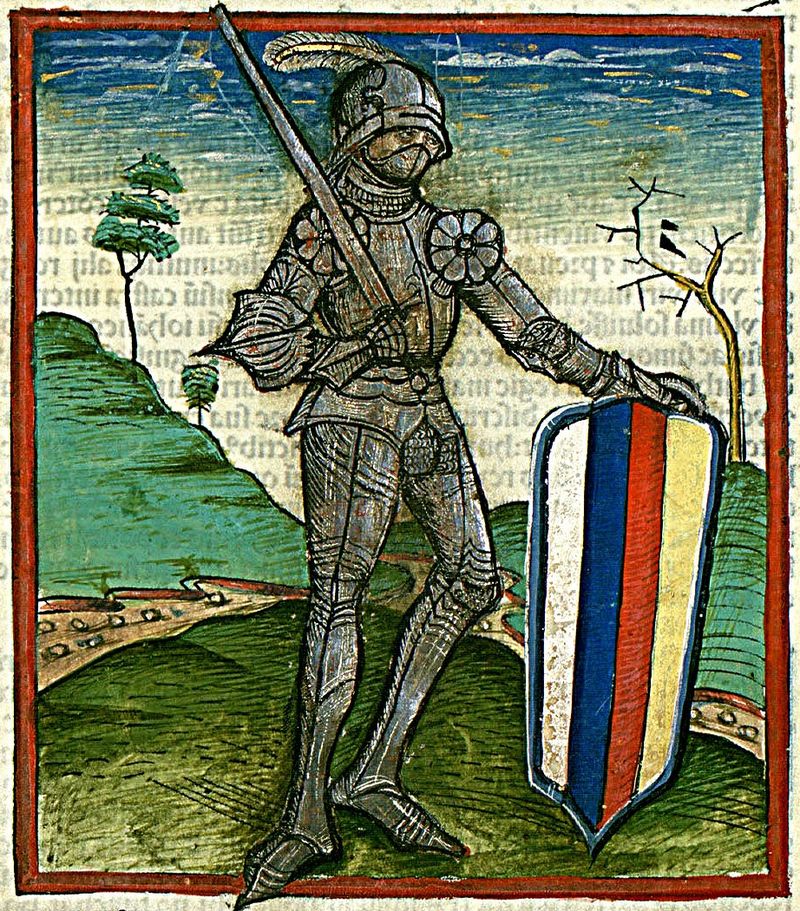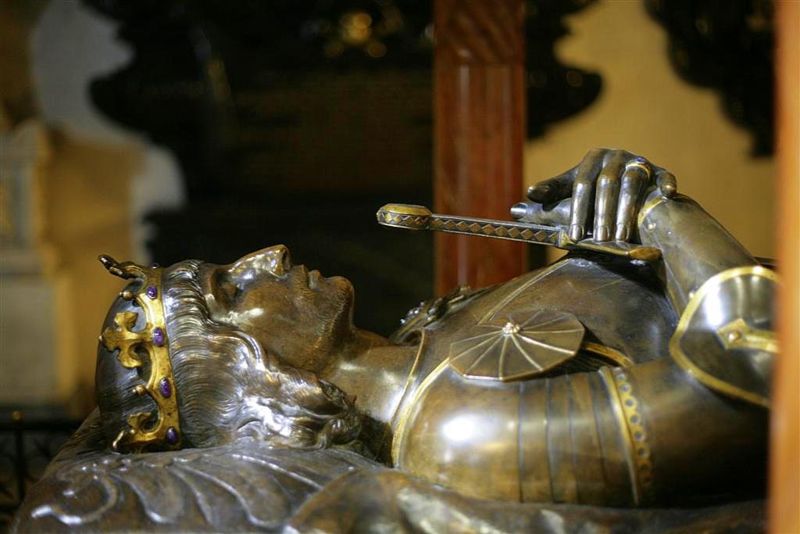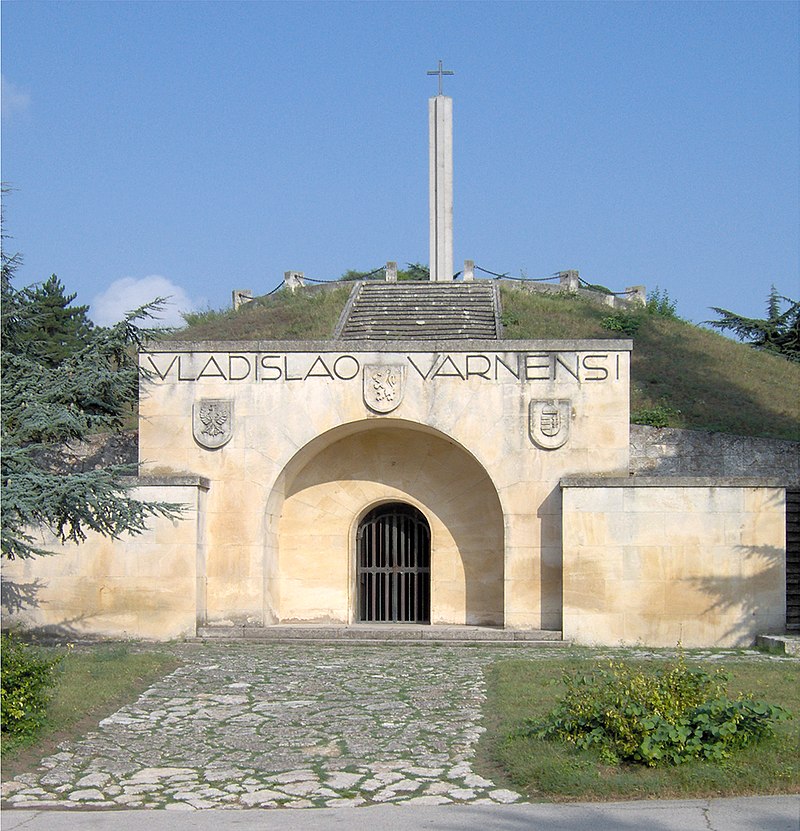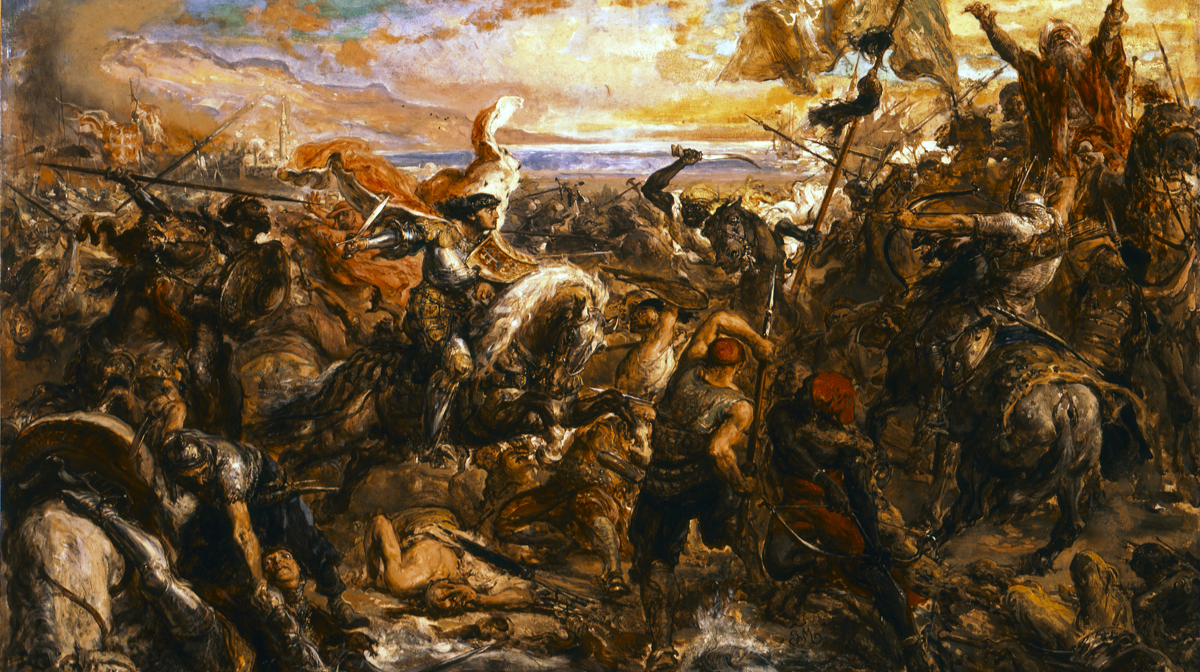After the Hungarian Crusade of 1217 the 1444 Crusade was certainly the largest military undertaking of the medieval Kingdom of Hungary. In January 1444, Pope Eugene IV (reigned 1431–1447) proclaimed a new crusade to help Eastern Christians, not least to establish the ecclesiastical union agreed by the Byzantine Emperor John VIII Palaiologos (r. 1425–1448) at the Council of Florence in 1439. This union, which had been concluded with great difficulty between the Byzantine Patriarch and the Roman Pontiff, was conditional on the launch of the promised crusade, and this was obvious to both the Pope and Cardinal Cesarini, his legate in Hungary.
In Europe, it was logical to think that a campaign could significantly weaken the Turks while fighting the Karamanids, their eastern adversaries. The Europeans were not mistaken, the Sultan was indeed engaged in a campaign against the Karamanids and left Europe in the early summer of 1444. Meanwhile, King Ulászló I of Hungary (r. 1440–44) and Poland (Władysław III Warneńczyk in Polish) and Governor John Hunyadi (r. 1446–1453) were to lead a land crusade to attack the Ottoman army stranded in the Balkans.[1] However, they forgot the fact that the Pope was of Venetian origin and that Venice and Genoa were mortal enemies in the Mediterranean. The campaign at Varna (today’s Bulgaria) was not just a Hungarian–Turkish affair but was at least as much influenced by the world politics of the time as well. So too was the Byzantine civil war, when the brother of Emperor John VIII, Demetrios Palaiologos, attempted a coup d’état and in the spring of 1442 called in the troops of Sultan Murad II (r. 1421–1451). Much of the diplomatic effort was directed at preventing Ottoman forces from crossing the Bosporus from Asia. This was ensured by the deployment of a Christian fleet of twenty units from the papal forces, Venice, Burgundy, and Ragusa, which was actually in position by 17 August 1444. The Christian fleet’s attempt to hermetically seal the straits did not, of course, bode well, since with such a small number of ships the transfer of the Turkish armies could at best only be delayed.

While members of the Christian coalition were urging war, the beleaguered Sultan offered Hungary a very advantageous peace, which Hungary accepted. In the meantime, the Western states, albeit to varying degrees, all wanted to share in the hoped-for military successes and to see their money invested in the building of the naval fleet returned in the form of territorial gains, including in Thessaloniki, Gallipoli, and Albanian territories. With the Hungarian–Ottoman peace treaty, wrongly known as the ‘Peace of Szeged’, but in fact concluded in Edirne on 12 June 1444, the Sultan succeeded in breaking the anti-Ottoman coalition of Christians.
‘The campaign at Varna was not just a Hungarian–Turkish affair but was at least as much influenced by the world politics of the time as well’
However, the Hungarian King, presumably at the instigation of Cardinal Cesarini, declared the peace treaty invalid already on 4 August. Nevertheless, the Ottomans fulfilled the peace ratified by the Hungarian side on 15 August in Oradea (today’s Romania) and on 22 August they handed over the fortresses of northern Serbia to the Serbian Prince George (Đurađ) Branković. In return, Branković gave his Hungarian possessions to Hunyadi. However, the King and Hunyadi, in violation of the peace treaty, still decided to launch the already prepared campaign and crossed the border on 22 September at the head of the Crusaders. Obviously, the ambiguity of Hungarian policy caused serious confusion in the Christian coalition. The news of the peace treaty reached the fleet guarding the straits, and the Turks even showed Jehan de Wavrin, the commander of the fleet, a purported copy of the treaty.[2]
The majority of the army in the campaign was Hungarian, even if it was smaller than the victorious army of the 1443–44 campaign. The army that was led beyond the country’s borders was essentially composed of mercenary contingents, for which several recruiting warrants have survived. Cesarini, as legate of the war, apparently recruited crusaders directly, who could not have arrived in large numbers. The vast distances involved meant that an army was essentially on horseback, and infantrymen were more likely to be on chariots, with the artillery they carried.
Today’s military historians also accept the opinion of contemporary Polish chronicler Jan Długosz, who estimated the Christian army at 15,000–20,000, with 3–4 more from Wallachia. A Polish auxiliary force also arrived, as did the Germans and the Burgundians, who wanted to avenge the defeat at Nikopol in 1396. Jehan de Wavrin’s nephew personally visited the site of the battle of 1396 in 1445.
The main army left the Danube line at Tarnovo, while also besieging the city of Sumen (25 October–3 November), and capturing Novi Pazar. Despite minor Ottoman successes, they met no significant resistance, raising their hopes again. The army aimed to capture Edirne, the Ottoman capital, but the road through the passes could not be used because of the Ottoman blockade. Instead, they headed for the Black Sea, hoping to meet the Christian fleet there and receive supplies. In the meantime, the Sultan had assessed the severity of the threat and had assembled a substantial army on the Asian side, arriving at the straits in mid-October, when the Christian fleet was already stationed there. However, the crossing could not be prevented with the 10–20 ships available, and some of the Turkish troops below Gallipoli were only able to cross outside the range of the Christian fleet. Furthermore, the Sultan could rely on the help of the Genoese colony of Constantinople, from whom he borrowed transport ships.

The Christian battle plan thus failed, but the Ottoman army of perhaps 40,000 men was nevertheless confronted by a strong Christian army at Varna on 10 November. The battlefield must have helped the Christians’ resolve, as they were pinned down in the area between the Black Sea and Lake Varna. The Transylvanian troops were on the left in the Hungarian front line, with the King in the centre, followed by Cesarini and Country Judge Stephen Báthori with the battle flag, and finally, on the right, the contingents from Eger, Bosnia, and Slavonia, led by the experienced Croatian–Slavonian Ban Franko Talovac. Behind the army, a wagon fort was set up, with infantry and artillery. Unlike the later losing battle of Mohács, the Hungarians actually stood a good chance here. At the beginning of the battle, they routed the Anatolian troops and killed their commander. The Pasha leading the Rumelian cavalry was forced to flee, leaving only the Sultan and his assorted Janissary infantry on the battlefield. The outcome of the battle is traditionally depicted in Hungarian historiography as ‘almost victorious’. Our only historical source is a document issued by John Hunyadi, in which he bestowed a coat of arms on his former soldier, Peter Berekszói, in 1448. According to the document, Peter bravely attacked the Janissaries who were attacking Hunyadi at the Battle of Varna at a time when ‘it was not certain which side the heavens would give victory to’. This was likely John Hunyadi’s official explanation for his defeat. However, the coat of arms is a uniquely authentic representation of a Hungarian soldier who indeed took part in the battle.[3]
‘The outcome of the battle is traditionally depicted in Hungarian historiography as “almost victorious”’
After the advancing Christian soldiers had been flanked by the Anatolians, the unexpected tactics of the dismounted Janissary units and the success of the obstacles they had raised against the cavalry turned the tide of the battle. It was then that the young Hungarian King made a reckless charge against the Janissary troops defending the Sultan, which cost his life. The name of the janissary who cut off the head of the Hungarian King is recorded in contemporary sources, indicating that his heroic deed decided the fate of the battle. At the sight of the King’s severed head, the Christian battle formation was disrupted, and the confusion became unstoppable. The defeat did not degenerate into panic, however, and Hunyadi and his soldiers left the battlefield in an orderly fashion and marched on towards the Danube. Many of the leaders of the Hungarian army lost their lives, such as Cesarini, the Bishop of Oradea and Eger, and Stephen Báthori, the father of the victor of the Battle at Kenyérmező (1479). The King’s severed head was displayed in Gallipoli and other towns, and according to other traditions was sent to the Mameluke Sultan. Dozens of Hungarian knights were taken as prisoners to the court of the Mamelukes of Cairo and the Tatar Khan of Crimea, where they were humiliated in victory parades.
The consequences of the battle in Hungary are well known, but the fate of the campaign is less. While the Venetians and the Pope’s representatives argued over the sharing of the costs, the Burgundian fleet that remained on the scene was ravaging the coast. Then in the summer of 1445, anticipating a major Hungarian campaign, they sailed up the Danube. In collaboration with the soldiers of the Prince of Wallachia, they set fire to Tutrakan, Giurgiu, and Ruse and began the siege of Turnu Măgurele. The plans for Hungarian cooperation could not have been unfounded, for in September Hunyadi also appeared on the front. However, no serious military action took place, and the Burgundians had returned to Constantinople by early November.

The modest gains became null and void in 1448, at the second battle of Kosovo, where Sultan Murad again defeated Hunyadi. The campaign at Varna was one of the most important campaigns launched to repel the Turks, and it needed little to succeed. The Battle of Varna can be compared to the Battle of Hattin in 1187, which led to the loss of Jerusalem, as Varna opened the way to Byzantium, and thus nothing could prevent the Ottoman siege and fall of Constantinople in 1453.
Of course, the Ottoman Empire could not be destroyed in a single campaign, but their vassals could have been lured to the Christian side for a shorter or longer period, and the Ottoman advance could have been slowed down considerably. At the same time, the death of the Hungarian King opened unparalleled opportunities for John Hunyadi, which he took advantage of: as governor of the country, he paved the way for the election of his son Matthias Hunyadi as king in 1458 and laid the foundations for the Hunyadi era, which was to last until 1490 and was an unparalleled success for the Hungarian nation.
[1] John Jefferson, The Holy Wars of King Wladislas and Sultan Murad: The Ottoman-Christian Conflict from 1438–1444, Brill, Leiden, 2012.
[2] Tamás Pálosfalvi, From Nicopolis to Mohács. A History of Ottoman-Hungarian Warfare, 1389–1526, Leiden, Boston, Brill, 2018, pp. 105–106.
[3] Anton Avar (ed.), A Hunyadiak címereslevelei 1447–1489 (The coat of arms of the Hunyadis), Budapest, 2018, pp. 31–33.
Related articles:







